
Updated on 7/16/2024 to correct pickle brine ingredient listing.
Brussels sprouts are great.
They’re like that awkward kid from high school. You know, the one with the bad acne whose mother always cut their hair; and then shows up to your 20th class reunion looking like a million bucks, happily married with a career you would kill for.
They’ve come a long way from the pasty, steamed abominations we were all forced to eat as children. Ahem, Brussels sprouts, not the kid you went to school with.
When the quick refrigerator pickle craze started, I thought Brussels sprouts were a natural candidate. Their firm texture means they’ll have a great crunch when pickled, and uncooked, their flavor is pretty mild, making them a perfect blank canvas for your favorite pickling spices.
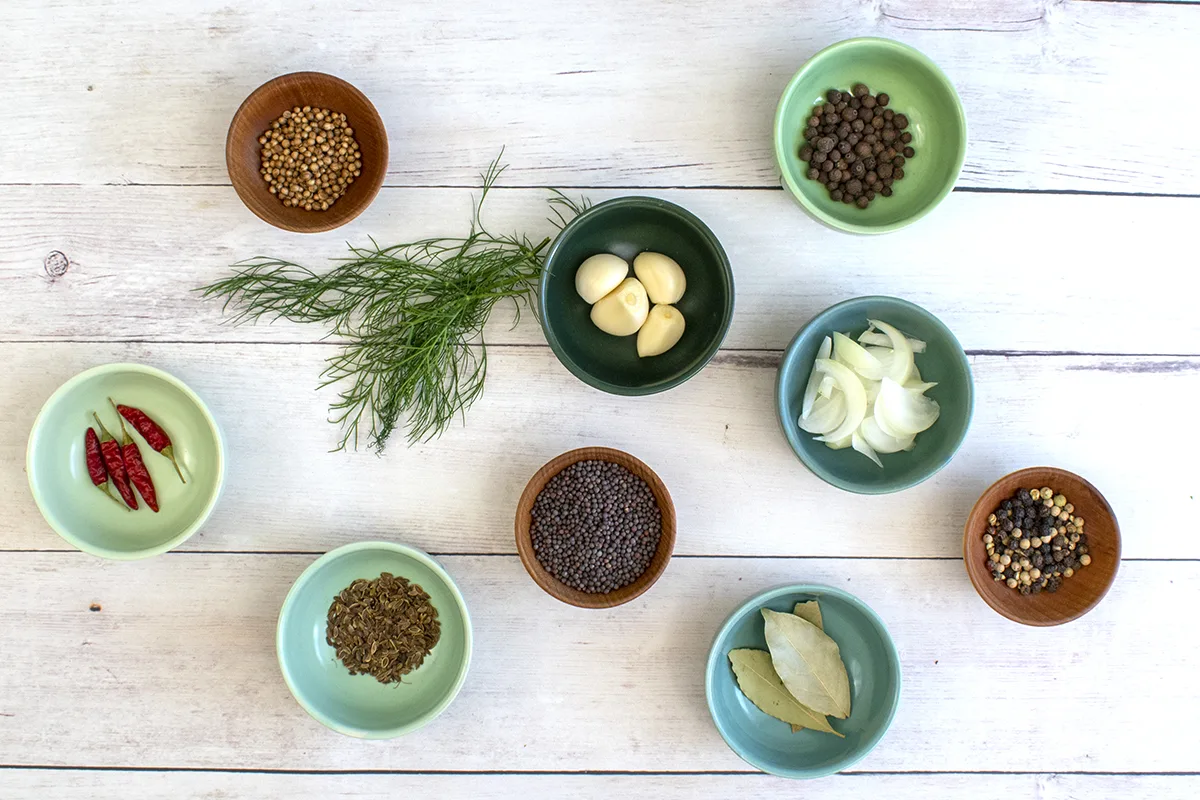
So, as we come into prime Brussels sprouts season, I thought I’d share my quick pickled Brussels sprouts recipe with you. These refrigerator pickles will be ready to eat within a week but are amazing if you can be patient and wait two weeks.
Did I Say Two Ways? I Meant Four
As the title says, I’ll show you how to make these pickles using two different pickling spices to give you two very different flavor profiles. One has a more traditional mix of pickling spices, and the other is the classic combination of dill and garlic. Actually, come to think of it, you can make these pickles four different ways. It all depends on how you slice it.
And no, that’s not just an expression.
By cutting the Brussels sprouts one of two ways you get a different end product.
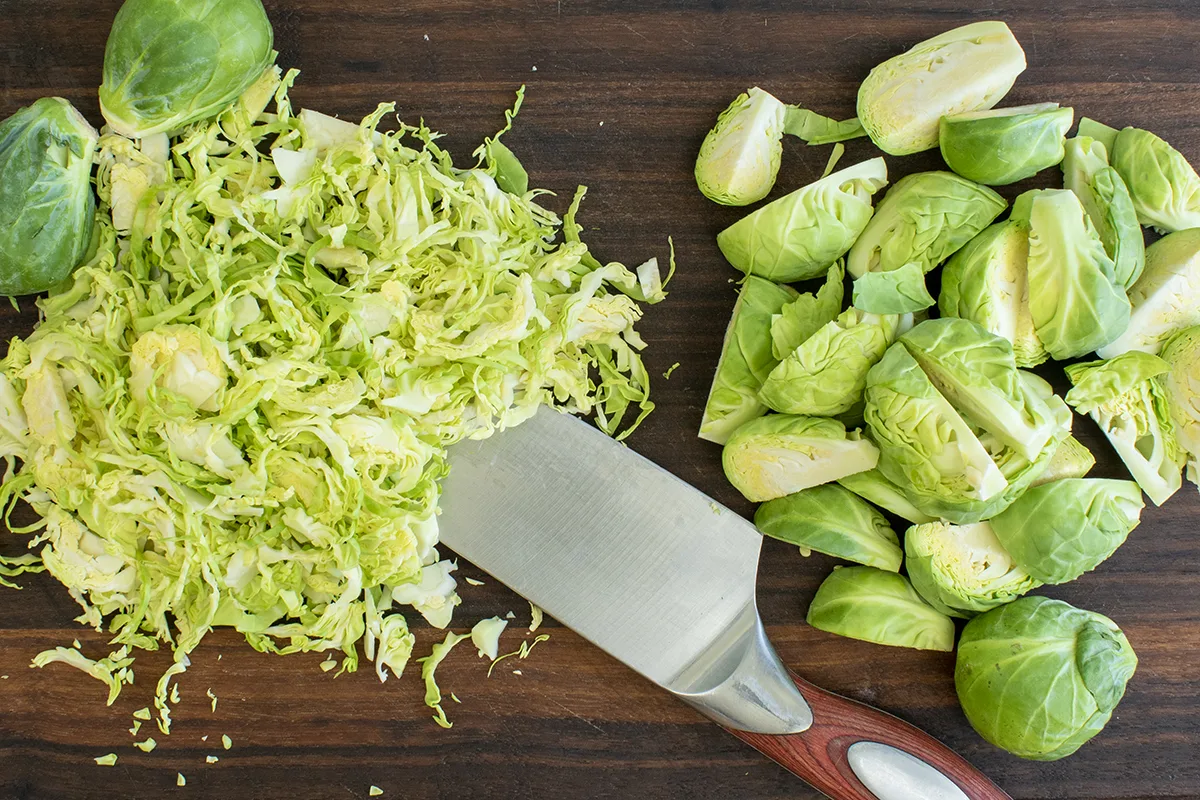
Quartering them provides you with bite-sized pieces of crunchy pickled Brussels sprouts just perfect for popping in your mouth while standing in front of the open refrigerator at 2:00 am.
Shredded, by finely slicing with a sharp chef’s knife or mandoline slicer, gives you more of a pickled slaw, perfect for topping sandwiches and burgers. Or, if you want to get really crazy, drain the brine after a couple of weeks and use the pickled Brussels sprouts slaw as the base for the best coleslaw you’ve ever eaten.
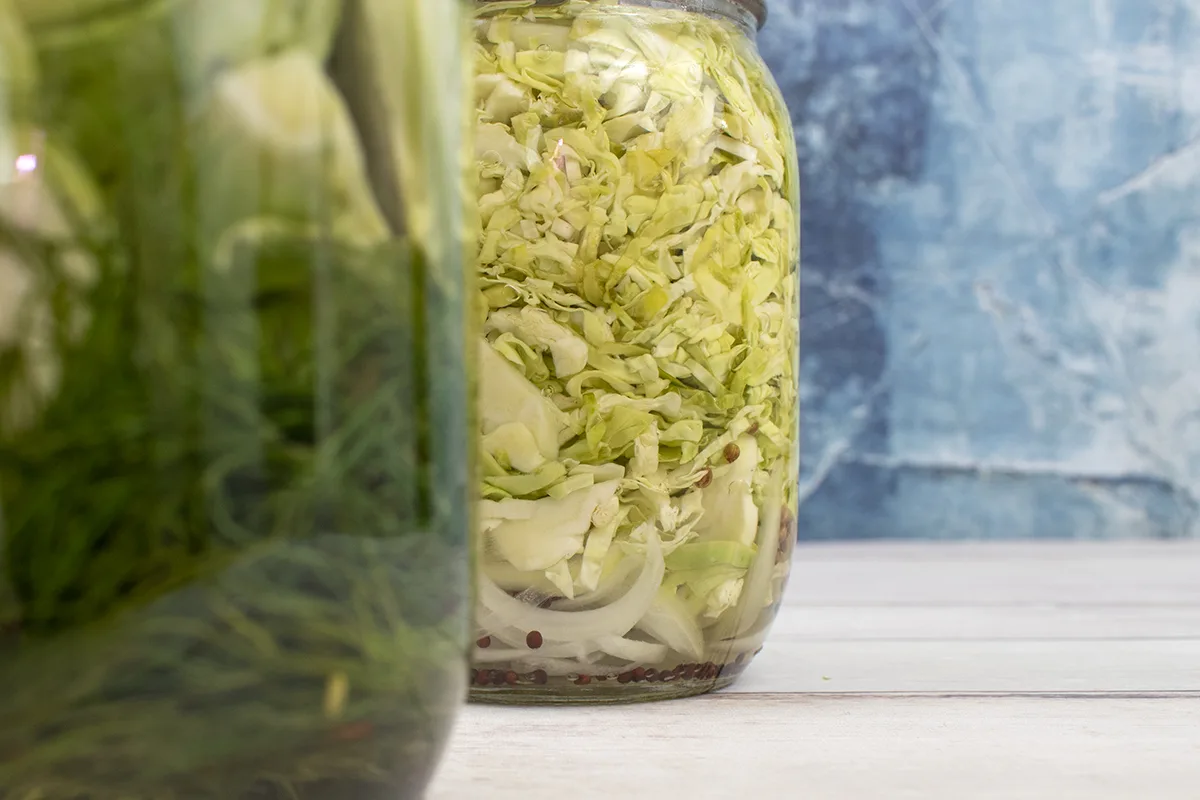
One Jar at a Time
My quick pickle recipes usually only yield one jar at a time. But trust me, there is a method to this madness.
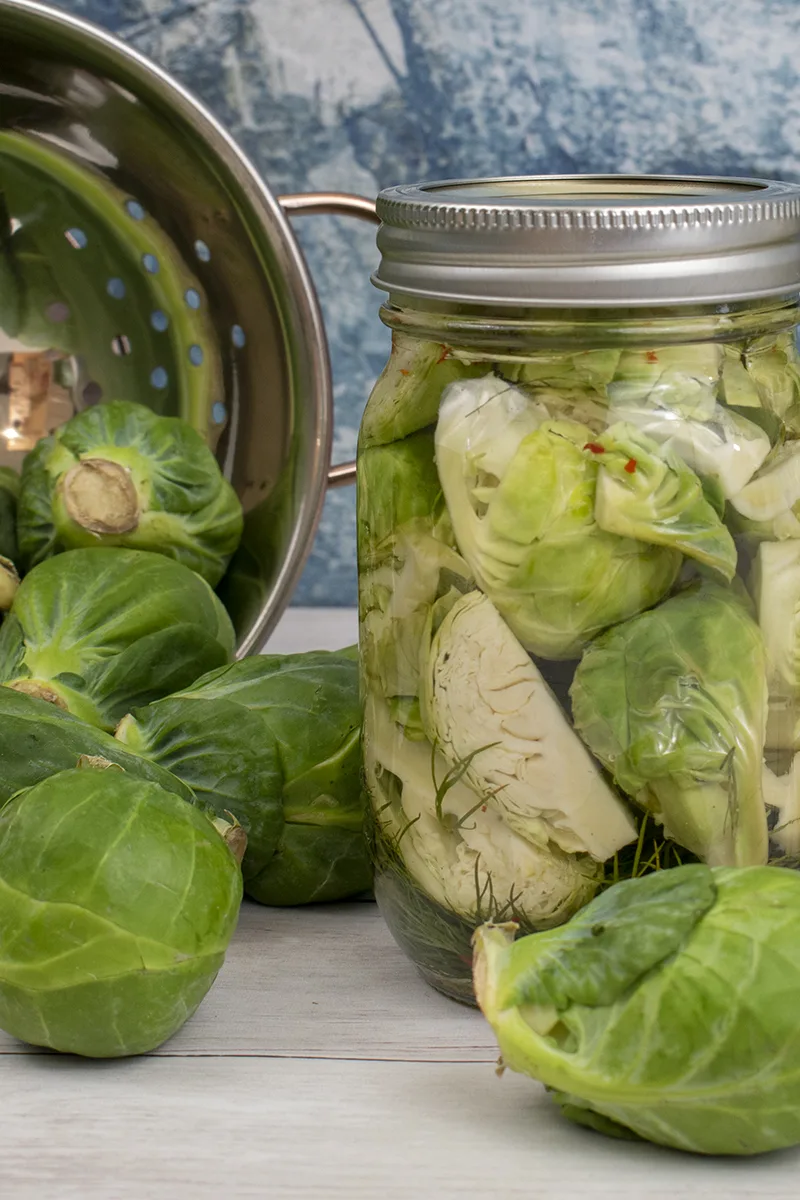
Quick pickles naturally have a shorter shelf life than something canned. The likelihood that you will eat six jars of, say, quick pickled garlic within their four-month life span is slim. So, making quick pickles a jar at a time, as you consume them, makes more sense.
Another reason for making one jar of pickles at a time is availability.
Depending on the size of your garden, you may not have enough cucumbers ripe at one time to make eight pint jars of dill pickles in one go. But with quick pickles, you can easily fill one pint jar of dill pickles eight times over the growing season.
And there’s nothing quite like using a recipe for a larger batch, only to find you’ve got half a saucepan of pickling brine left because you didn’t have enough of your main ingredient to fill all the jars. Making one jar at a time helps to reduce waste.
Finally, it’s right there in the name – quick!
Yes, it applies to how quickly they’re ready to eat, but from where I’m standing, it should also apply to how long it takes to make them. You can easily whip up a jar of quick pickled Brussels sprouts in as little as five to ten minutes.
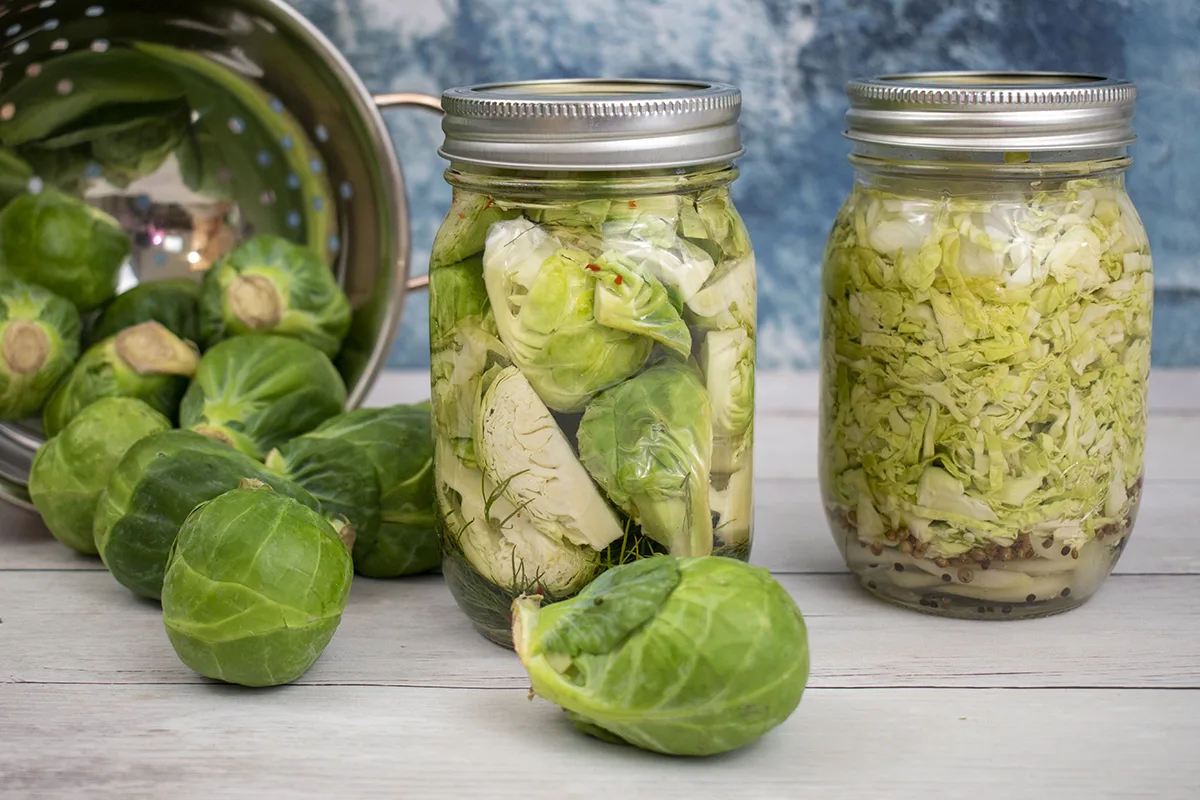
The flip side of this is that it’s incredibly easy to double, triple or even quadruple the recipe if you happen to have quite a bit of veg on your hands.
Versatility, who doesn’t love that?
Are you ready to make some pickles yet? Reading this has probably taken longer than it will take you to make a jar.
Choosing Brussels Sprouts
If you’ve grown Brussels sprouts, pickle them immediately after picking them. And for an extra tasty pickle, wait until after the first frost to make a batch or two. Trust me on this one.
Otherwise, opt for the freshest Brussels sprouts you can get your hands on – hello, Farmers Market. If you’re purchasing them from your local supermarket, choose firm sprouts with tight heads. Make sure you choose ones that are free from blemishes.
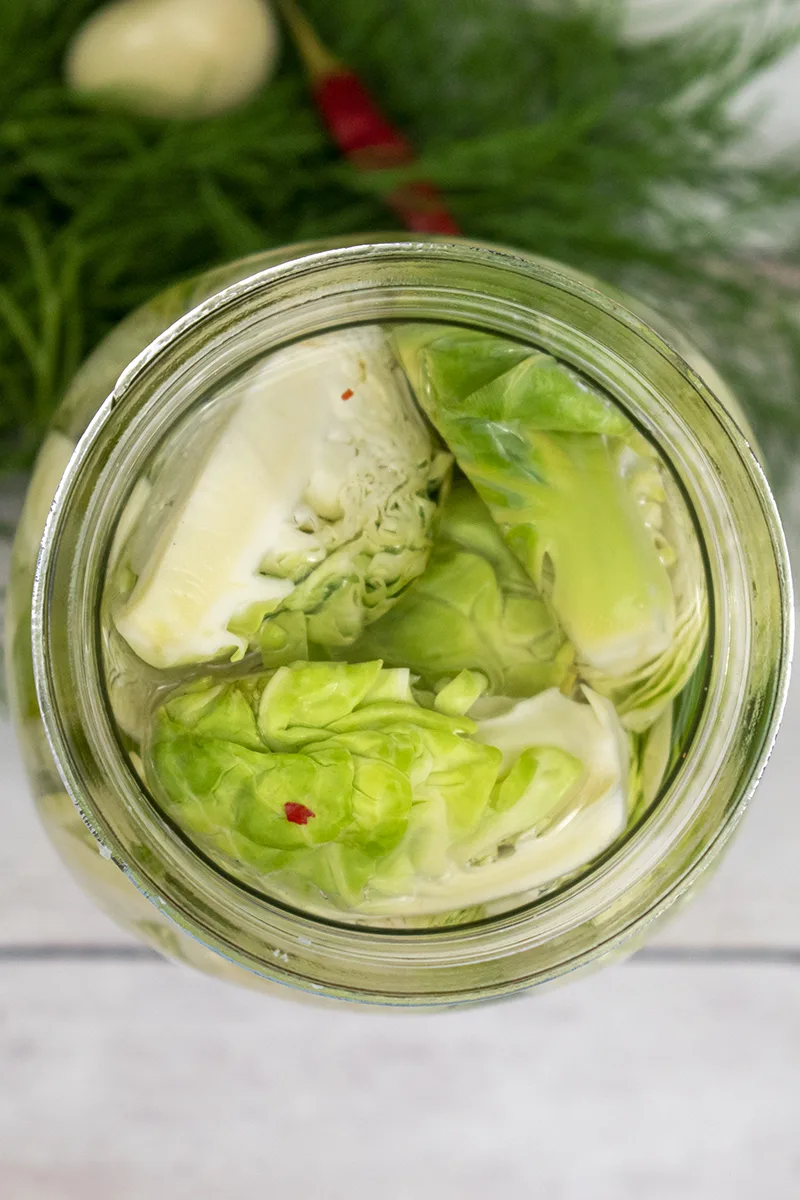
Equipment:
- Clean pint jars with lids and bands
- Knife
- Cutting Board
- Saucepan
- Canning funnel
- Clean dishcloth
The Ingredients:
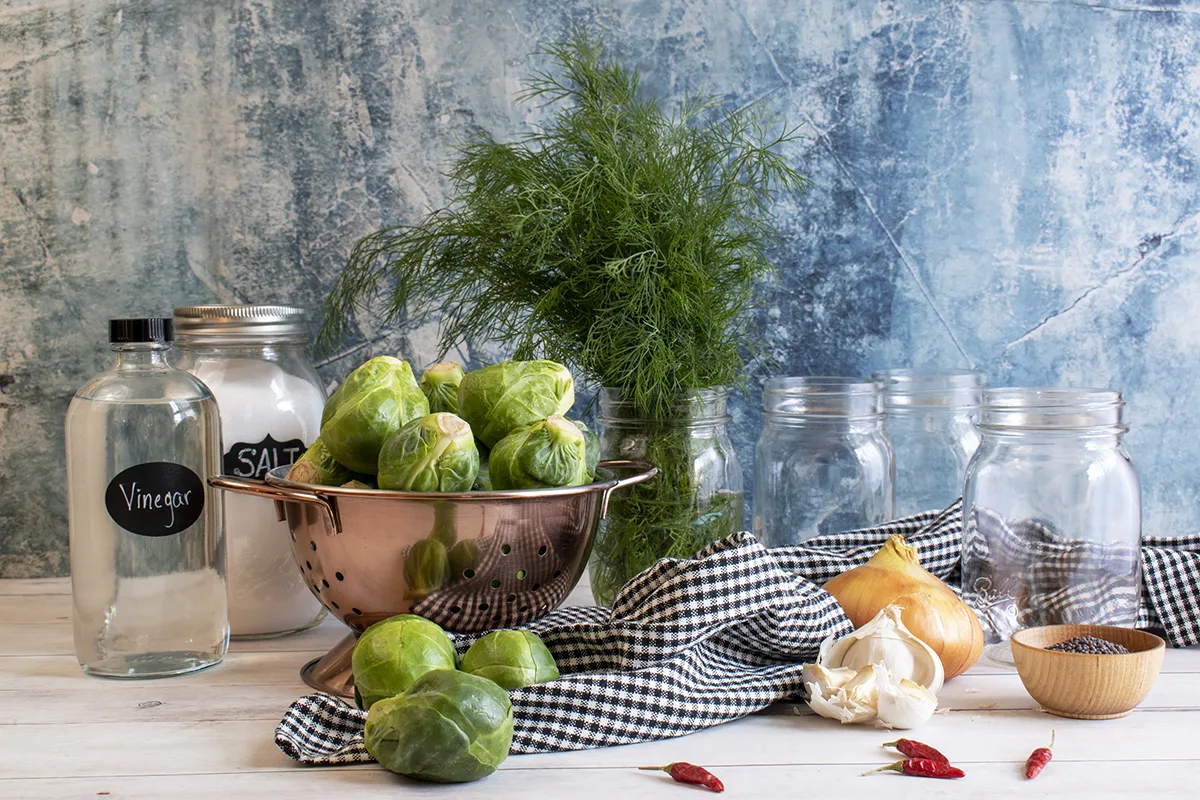
Traditional Pickled Brussels Sprouts
- Enough quartered or shredded Brussels sprouts to fill a pint jar
- ¼ cup of finely sliced onion
- A dozen peppercorns
- ¼ tsp mustard seed, black or yellow
- ¼ tsp coriander seed
- 3 allspice berries
- 1 ¼ cup of white vinegar (try apple cider vinegar for a slightly sweet-tart pickle)
- 1 cup of water
- 1 tablespoon of canning salt or non-iodized table salt
Quick Dilly Brussels Sprouts
- Enough quartered or shredded Brussels sprouts to fill a pint jar
- ½ cup of fresh dill, lightly packed
- 2-3 cloves of garlic, peeled; I’m kidding, put as much darn garlic in there as you want
- ¼ tsp of red pepper flakes
- 1 ¼ cup of white vinegar
- 1 cup of water
- 1 tablespoon of canning salt or non-iodized table salt
Directions:
- Begin by making the pickling brine. Bring the vinegar, water and salt to a boil in the saucepan over medium heat. Reduce the heat and cover the saucepan, simmering the brine for five minutes.
- While your brine cooks, rinse the Brussels sprouts and remove several of the outer leaves until you’ve reached the clean, unblemished inside. Cut off the dried end where the sprout was attached to the stem.
- Either quarter or shred the sprouts until you have roughly two cups.
- Depending on which recipe you’re making, add either the traditional pickling spices OR the dill, garlic and pepper flakes to the bottom of the jar.
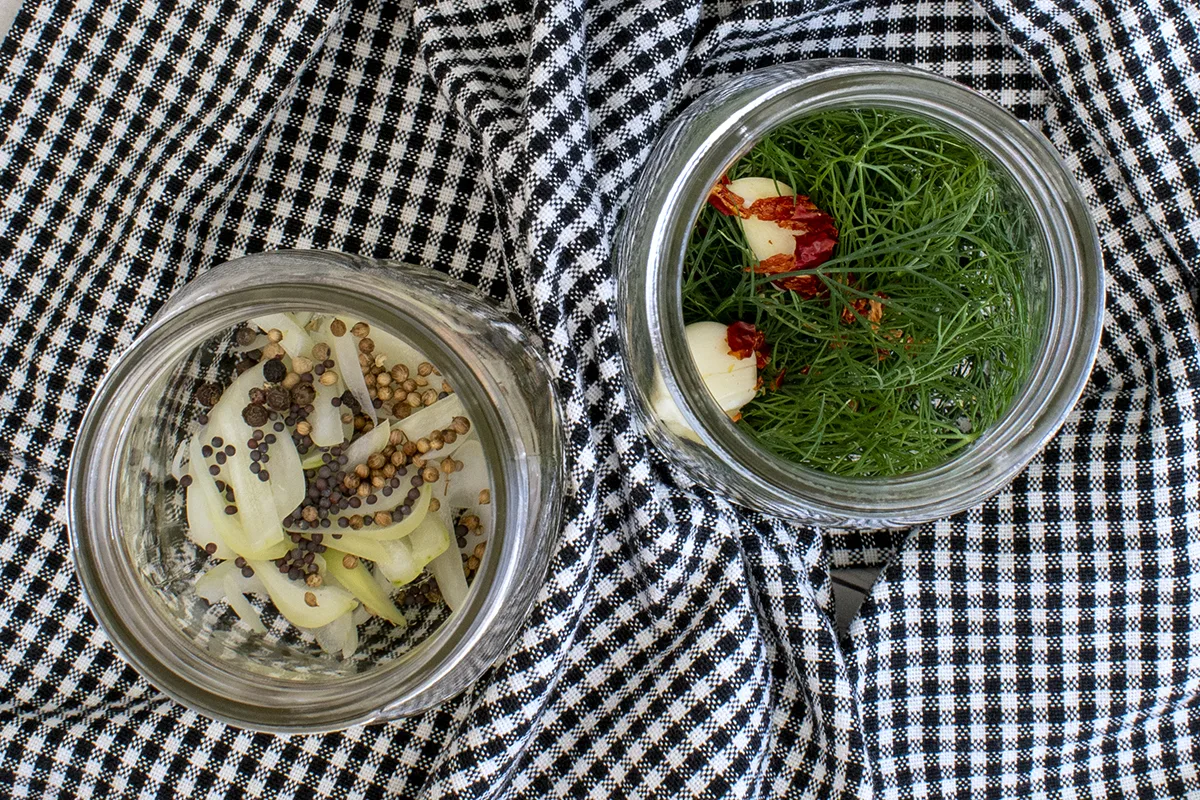
- Using a canning funnel, add the Brussels sprouts to your jar, packing them firmly and leaving 1” of headspace.
- Pour the hot brine into the jar, leaving ½” of headspace. Remove the funnel, wipe the rim of the jar and seal with the lid and the band until fingertip tight. You may need to rotate the jar or tap it firmly on the counter several times to dislodge any air bubbles.
- Once the jar has cooled, store it in the fridge.
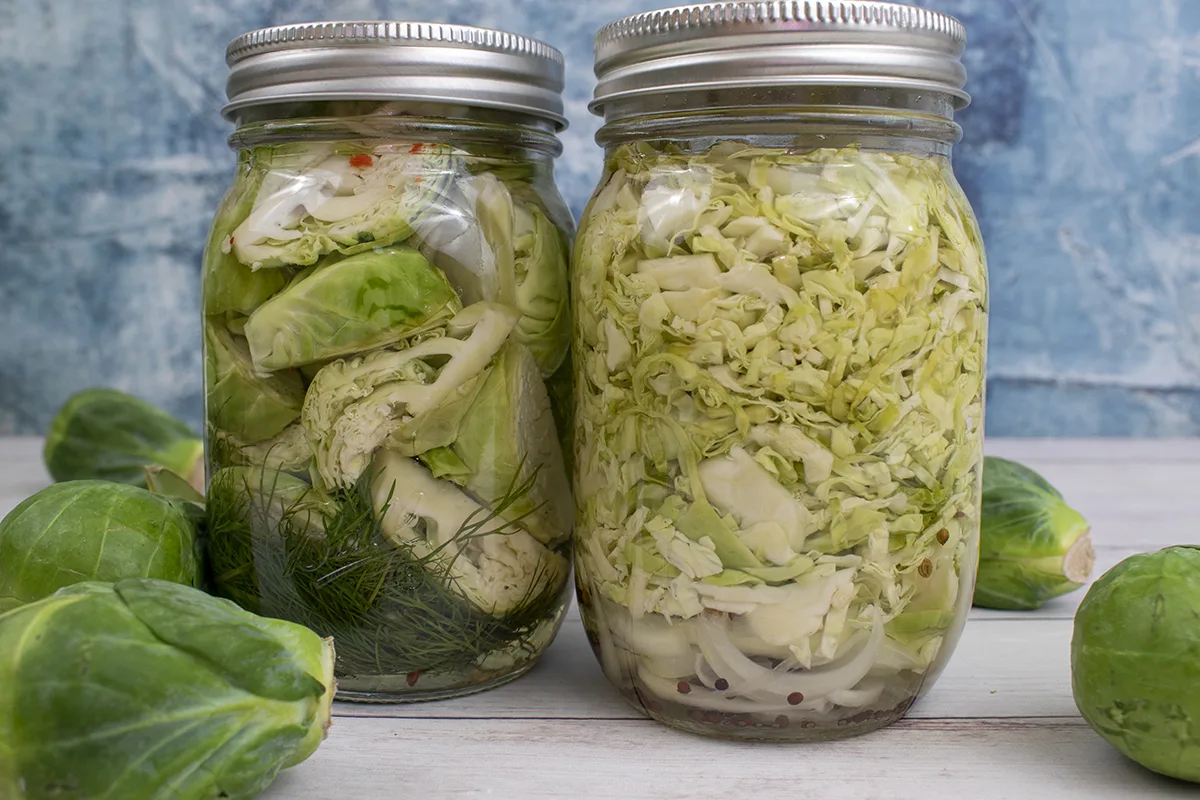
The pickles are ready to eat in a week and will keep in the fridge for two or three months. Although, the longer they sit, the softer they become. Don’t worry; they’ll be long gone before that happens.

Get the famous Rural Sprout newsletter delivered to your inbox.
Including Sunday musings from our editor, Tracey, as well as “What’s Up Wednesday” our roundup of what’s in season and new article updates and alerts.

